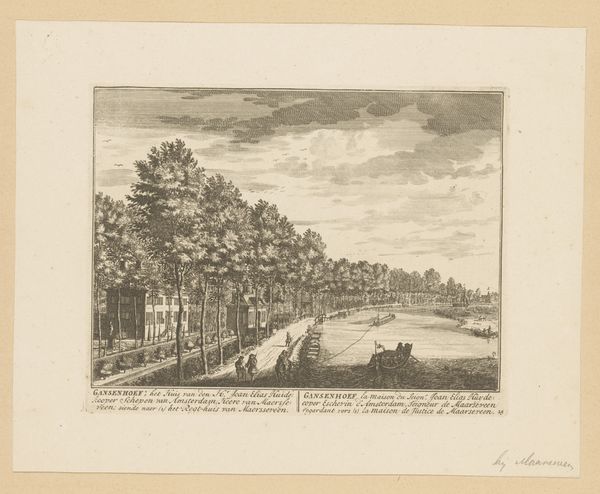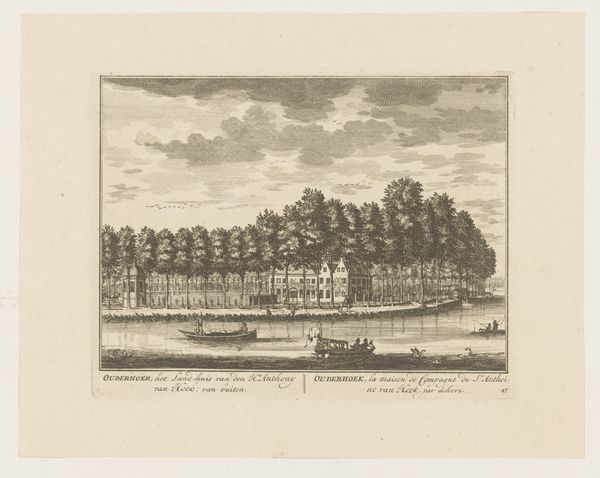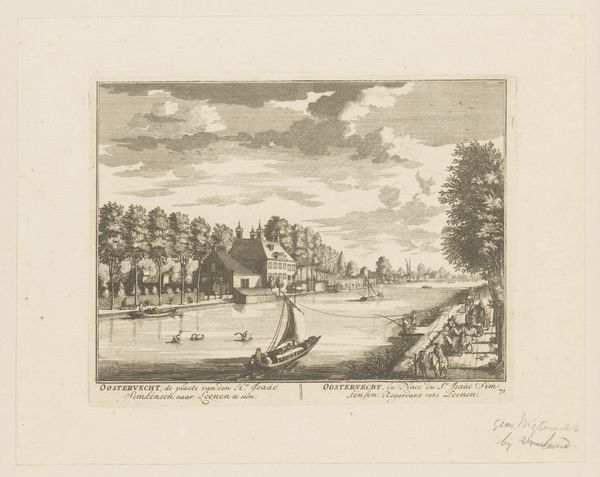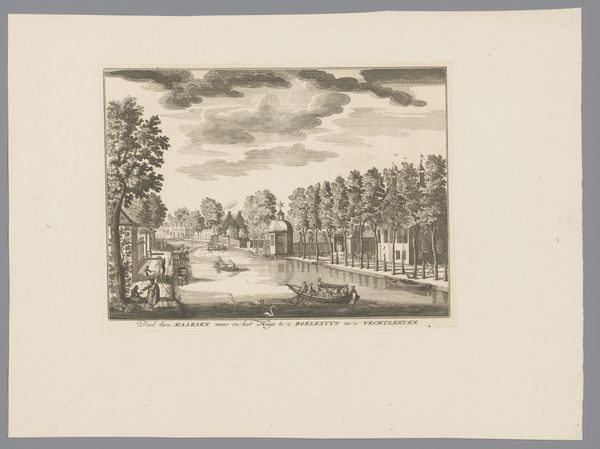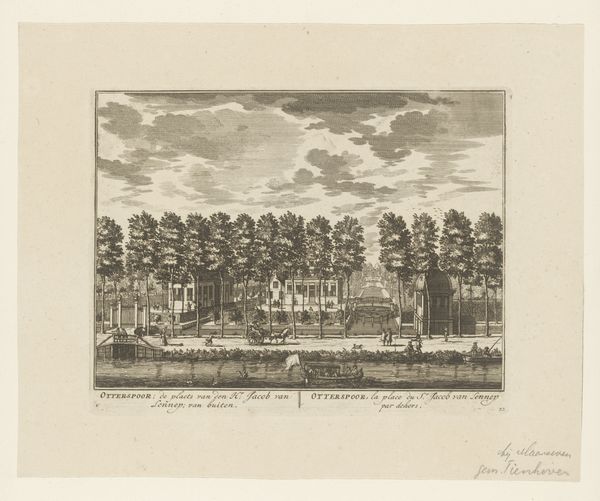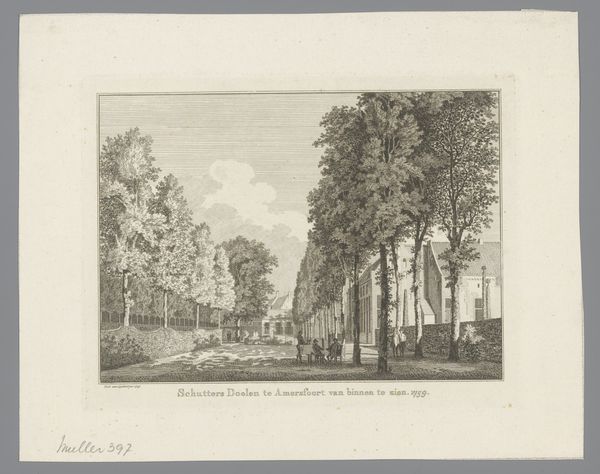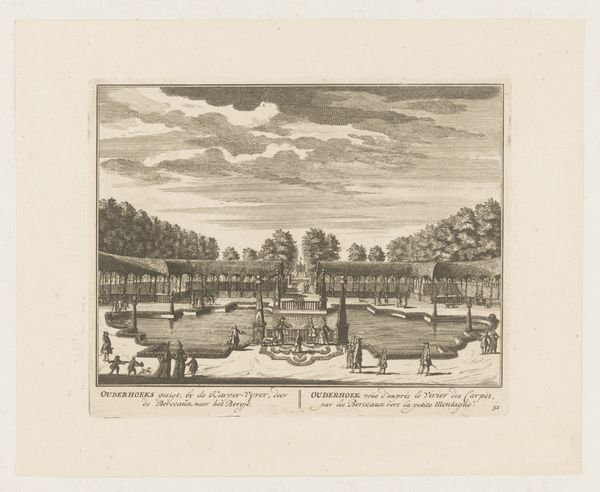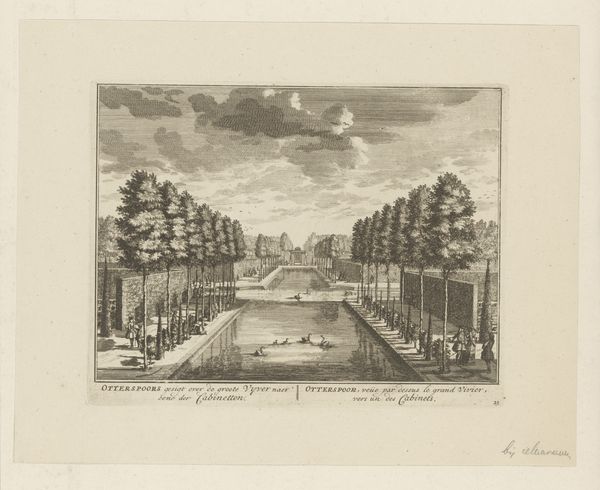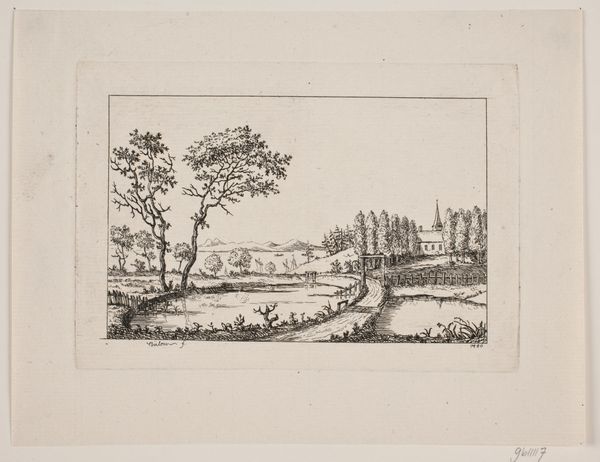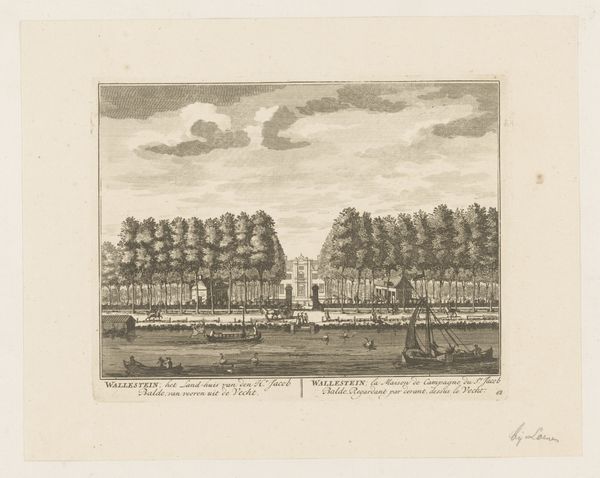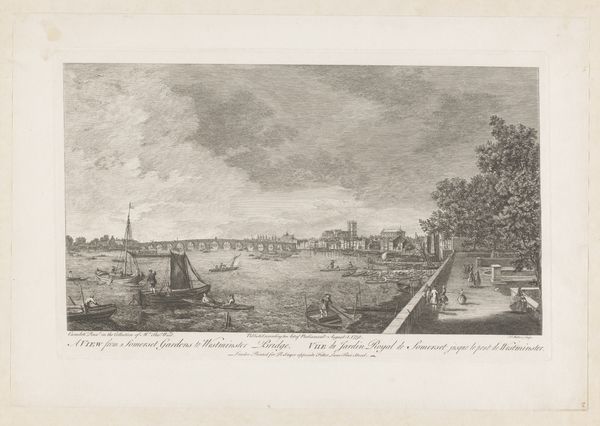
print, etching
#
baroque
#
dutch-golden-age
# print
#
etching
#
landscape
#
river
#
etching
#
cityscape
Dimensions: height 160 mm, width 206 mm
Copyright: Rijks Museum: Open Domain
Curator: This is Daniël Stopendaal’s "View of Middelhoek on the Vecht," an etching from 1719, showcasing a tranquil riverside scene. Editor: My first impression is one of serene formality. There's a very controlled harmony, with those evenly spaced trees reflected in the water. A quiet orderliness seems to define the atmosphere. Curator: Absolutely. This print comes from a time when the Dutch Golden Age was evolving, but still holding onto that desire to represent wealth and cultivated nature. We see it reflected in how estates are portrayed; they become emblems of power and prosperity in the social landscape. Editor: It's fascinating how waterways recur as both physical and symbolic arteries in Dutch art. The Vecht isn't just a river; it visually carries trade, leisure, and societal flow right before our eyes. The small boats, carefully placed, accentuate a delicate balance between human activity and the natural world. Curator: Precisely. Prints like these served as vital social documents. The rising merchant class acquired them as status symbols, reflecting their taste and access to refined leisure. They are celebrating the controlled ideal. Look how deliberately everything is placed; this reflects back on them, associating with stability and reason, something immensely important for a rising class. Editor: Even the clouds feel measured, echoing the regimented trees. Do you think it deliberately contrasts with more untamed representations to underline human dominance over nature? There’s no romanticism in unruly wilderness here. Everything adheres to social order and hierarchy; these motifs create a specific type of aesthetic message. Curator: I believe you've struck at a central idea. The Middelhoek estate embodies aspirations and serves almost as a curated reality. It stands for particular values and ambitions within the wealthy elite of that period, so art is about celebrating not just nature, but their controlled impact upon it. Editor: It does give pause when we consider how deliberately constructed that reality can be. Still, the human impulse for imposing patterns – social or aesthetic – always carries an emotional truth that feels eternal. It certainly speaks through the print now as it spoke then, though, admittedly, in subtly different registers. Curator: A very important thought to leave us with. Looking at works such as Stopendaal's through an understanding of socio-economic dynamics lets us see their true, complex function. Editor: Yes, considering symbolic visual languages alongside that unlocks just what endures within them—that shared experience expressed across centuries.
Comments
No comments
Be the first to comment and join the conversation on the ultimate creative platform.
